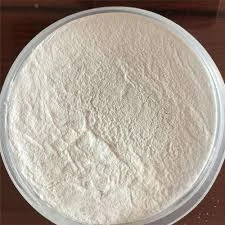
Nov . 20, 2024 02:26 Back to list
what is hpmc made from
Understanding HPMC Composition and Uses
Hydroxypropyl Methylcellulose, commonly known as HPMC, is a versatile compound widely used in various industries, including pharmaceuticals, food, cosmetics, and construction. This article delves into what HPMC is made from, its properties, applications, and importance in different sectors.
What is HPMC?
HPMC is a semi-synthetic polymer derived from cellulose, the primary structural component of the cell wall in plants. It is produced by chemically modifying cellulose through a process called etherification. This involves substituting hydroxyl groups of the cellulose molecule with hydroxypropyl and methyl groups. The result is a product that combines the natural benefits of cellulose with enhanced solubility and functionality.
The Raw Materials
The production of HPMC starts with the base material—cellulose. This cellulose can be sourced from various plants, most commonly from wood pulp, cotton, or other fibrous plant materials. After the cellulose is extracted, it undergoes a series of chemical processes
2. Etherification Following alkalization, the swollen cellulose is reacted with propylene oxide and methyl chloride in a controlled environment. The substitution of hydroxyl groups with hydroxypropyl and methyl groups results in HPMC. The degree of substitution varies, affecting the properties of the final product, including its viscosity and solubility.
3. Purification After etherification, the mixture undergoes purification to remove any unreacted chemicals and by-products, ensuring that the final product meets quality standards.
Properties of HPMC
what is hpmc made from

The chemical modifications impart several unique properties to HPMC
- Water Solubility HPMC is soluble in cold water, forming a viscous gel. This characteristic makes it an ideal thickening agent and stabilizer. - Biocompatibility Being derived from natural cellulose, HPMC is non-toxic and biocompatible, making it suitable for pharmaceutical and food applications. - Thermal Stability HPMC exhibits good thermal stability and does not degrade at elevated temperatures, which is essential for processes like baking or cooking. - Film-Forming Ability HPMC can form a film when dry, which is useful in coatings and packaging applications.
Applications of HPMC
1. Pharmaceuticals HPMC is commonly used as a binder and film-forming agent in tablet formulation. It aids in controlling the release of active ingredients, improving the efficacy of medications.
2. Food Industry In food applications, HPMC serves as a thickening agent, emulsifier, and stabilizer. It is found in sauces, dressings, and baked goods, contributing to texture and mouthfeel.
3. Construction HPMC is utilized in the construction industry as a thickener and water-retaining agent in adhesives, mortars, and plasters. It enhances workability and extends the open time of these materials.
4. Cosmetics In cosmetics and personal care products, HPMC is valued for its ability to improve texture and stability, commonly found in creams, lotions, and gels.
Conclusion
HPMC is a remarkable compound primarily derived from cellulose, offering a blend of natural and synthetic properties that make it invaluable across multiple industries. Its versatility, safety, and functionality continue to drive its use in modern products—from pharmaceuticals to food, cosmetics, and construction materials. As research advances and applications expand, HPMC's role as a sustainable ingredient will only grow, aligning with global trends towards eco-friendliness and health consciousness in product formulations. Understanding what HPMC is made from, as well as its diverse applications, underscores its significance in our daily lives and various industrial processes.
-
Versatile Hpmc Uses in Different Industries
NewsJun.19,2025
-
Redispersible Powder's Role in Enhancing Durability of Construction Products
NewsJun.19,2025
-
Hydroxyethyl Cellulose Applications Driving Green Industrial Processes
NewsJun.19,2025
-
Exploring Different Redispersible Polymer Powder
NewsJun.19,2025
-
Choosing the Right Mortar Bonding Agent
NewsJun.19,2025
-
Applications and Significance of China Hpmc in Modern Industries
NewsJun.19,2025







